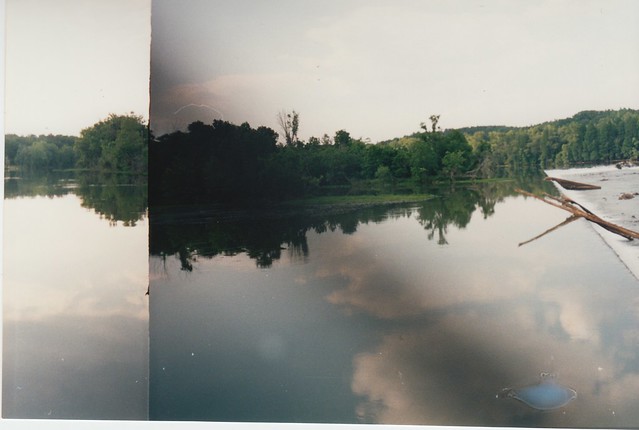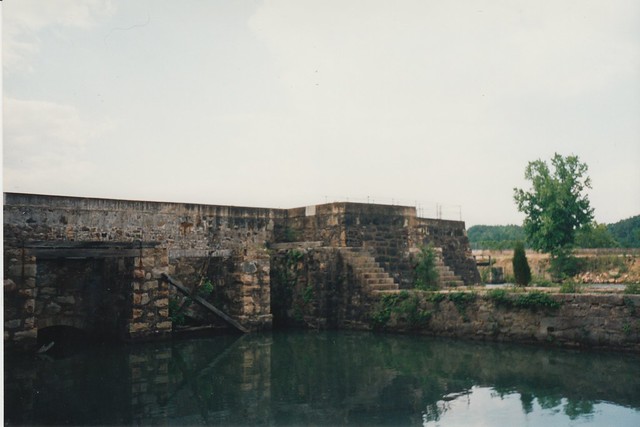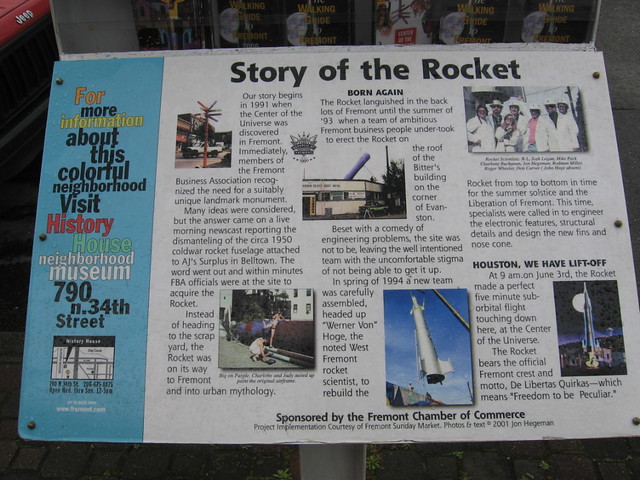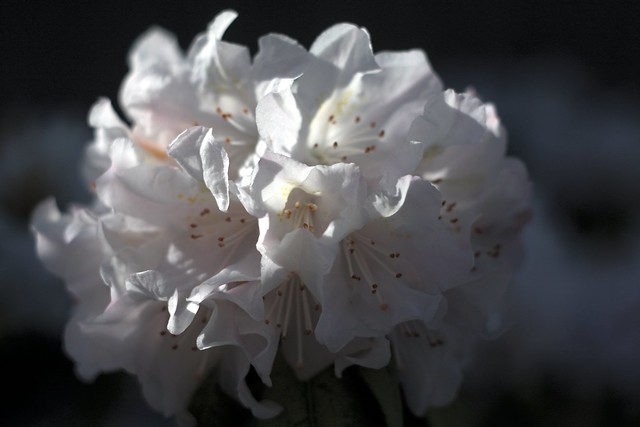As with the previous post, we're once again at the Delta Park/Vanport MAX station to look at another piece of Yellow Line public art. This one takes a bit more effort to find; the station includes a couple of overflow parking lots, the furthest next to the entrance to Portland International Raceway. The whole area is naturally low and marshy, and they must have concluded the parking lot would need a stormwater drainage feature. So a small wetland area was created and the lot built around it. This being a publicly funded transit project, some 1% For Art money was spent on sprucing up the new wetland area, and Waterline was born:
The artist was involved with much of the site design including grading, lighting, materials, and plant design. The visual focus is a basalt boulder that Is cut in half with stacked welded steel and acrylic and is lit with fiber optics at night.
That "Art of Stormwater" list from the city that I keep referring back to has a different take. (I apologize for this post being so quotation-heavy, but I figure I can either give you the original descriptions by people who knew what they were talking about, or I can try to paraphrase them as best I can, and I'm not really in a paraphrasing mood.)
Linda Wysong, Artist; 2004 Located near the Vanport site, Waterline integrates art, engineering, and the environment - reflecting the juxtaposition of the built and the natural environment in the managed landscape.
TriMet's Yellow Line art guide elaborates further:
- Massive steel arcs allude to the engineered landscape and Liberty ships made by Vanport residents.
- A glowing monolith of stone, steel and acrylic symbolizes the unity of human and natural worlds.
The "glowing monolith" resembles parts of Wysong's Shifting Assets along the Willamette stretch of Springwater Corridor. You can't really see the "glowing" part here since I took these during the day, but another of the city's stormwater art documents (since stormwater art is a thing apparently) has a nighttime photo of Waterline, showing the, uh, water line glowing. This saves me the trouble of going back to take my own nighttime photos. Which I probably wouldn't do anyway, on the theory that there are likely to be a few mosquitoes here at night for much of they year. I've gone on several times about (pseudo-)bravely risking a case of West Nile on behalf of this humble blog and its Gentle Reader(s). In reality, I think I'd like to avoid that, if at all possible.



